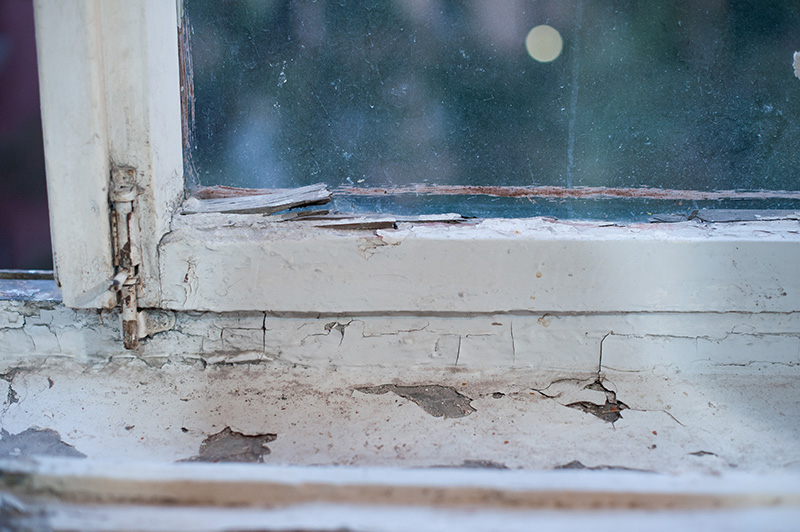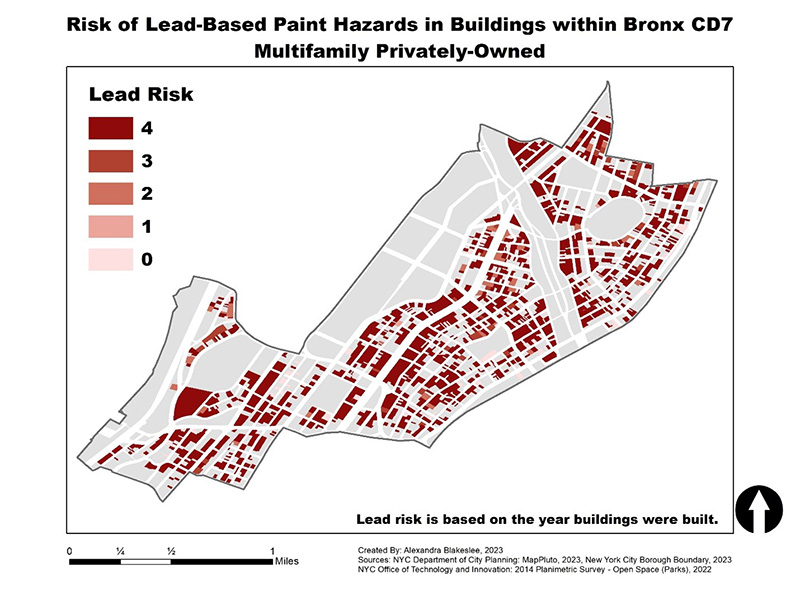Combining lead abatement with window replacement
Understanding the link between windows and lead

While strides have reduced the damaging or even fatal effects of lead paint, there remain many cases of lead poisoning in New York City. Lead can be found in painted wood windows and doors, and in window wells in older buildings – particularly in pre-1960 construction, before New York banned lead paint. These older buildings also tend to lack window maintenance and utilize older window technologies.
There is an opportunity to maximize co-benefits of lead abatement and window replacement. Additionally, funding programs integrating lead abatement and window replacement can lower costs and support a more equitable, healthier and more sustainable building stock.
The link between windows and lead
In 1978, the U.S. placed a federal ban on lead-based paint. When lead paint is present on operable windows, lead dust and paint chips accumulate in the window well. Children can be exposed, especially during warmer months with open windows. To compound the issue, most New York buildings were constructed pre-energy code and their windows are not required to comply with modern energy codes unless the windows are replaced.
Multiple studies show that replacing windows reduces lead exposure. Not only is this issue about protecting health, it is also about equity.
NYC Department of Health (DOH) reports that redlined neighborhoods affected by historic discriminatory real estate practices endure more deferred building maintenance. There are also significantly more lead paint violations and maintenance deficiencies in historically redlined, environmental justice neighborhoods compared to non-EJ neighborhoods (read more in the EJNYC report). A direct link exists between a lack of maintenance and health issues.
Many buildings could be targets for window replacement

The Northwest Bronx Community and Clergy Coalition (NWBCCC) is a community organization which hosts a Department of Energy (DOE) sponsored Weatherization Assistance Program. I analyzed building data for Bronx Community District 07, an EJ area where NWBCCC is located, to identify potential building candidates for both weatherization and lead abatement1.
There is no complete database showing which buildings still have or are likely to have lead. Year-built was used to determine which buildings within Bronx CD07 most likely to have lead-based paints and low-performing windows (figure 1). A risk ranking was then assigned (figure 2).

While this project focused on multifamily privately-owned buildings (figure 2), this methodology could be repeated for all building types and expanded to a city-wide scale. As shown in figure 1, we see a significant number of buildings that could have lead risks and be targets for window replacement.
Maximizing co-benefits
Government-funded programs for both lead abatement and window replacement have similar challenges:
- There are more buildings with lead risks than lead abatement funding can cover.
- There are more buildings with window maintenance needs than what programs like the DOE weatherization program will allow or can be justified with current cost-effectiveness calculations.
Integrated funding programs might be developed to lower overall costs of lead abatement and window replacement together, maximizing shared benefits of health, equity and building energy efficiency.
For the complete capstone project please contact Alex Blakeslee.


